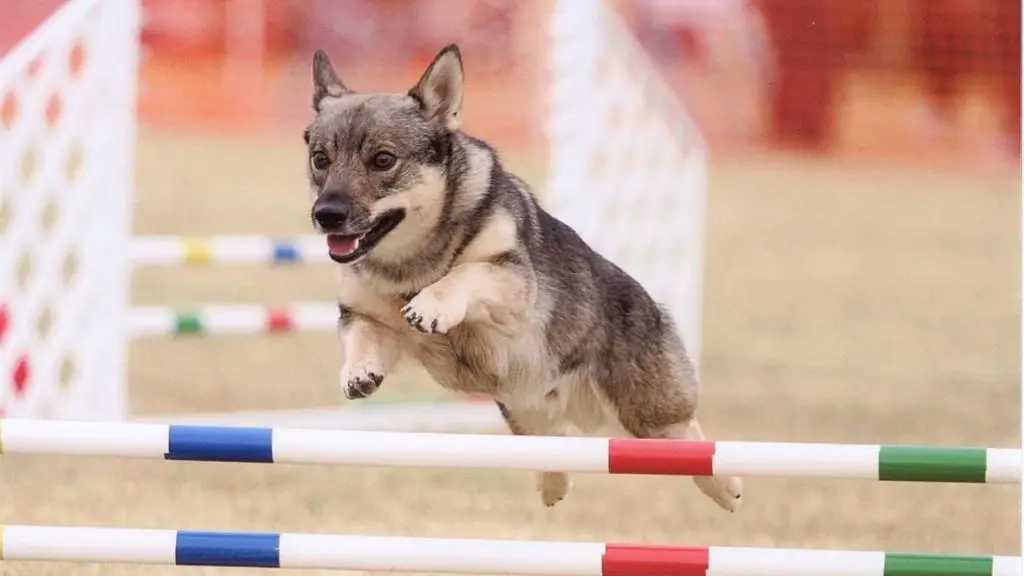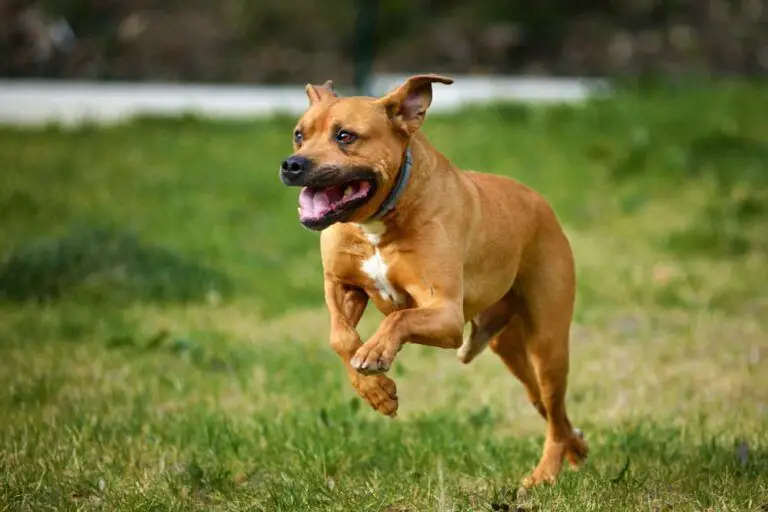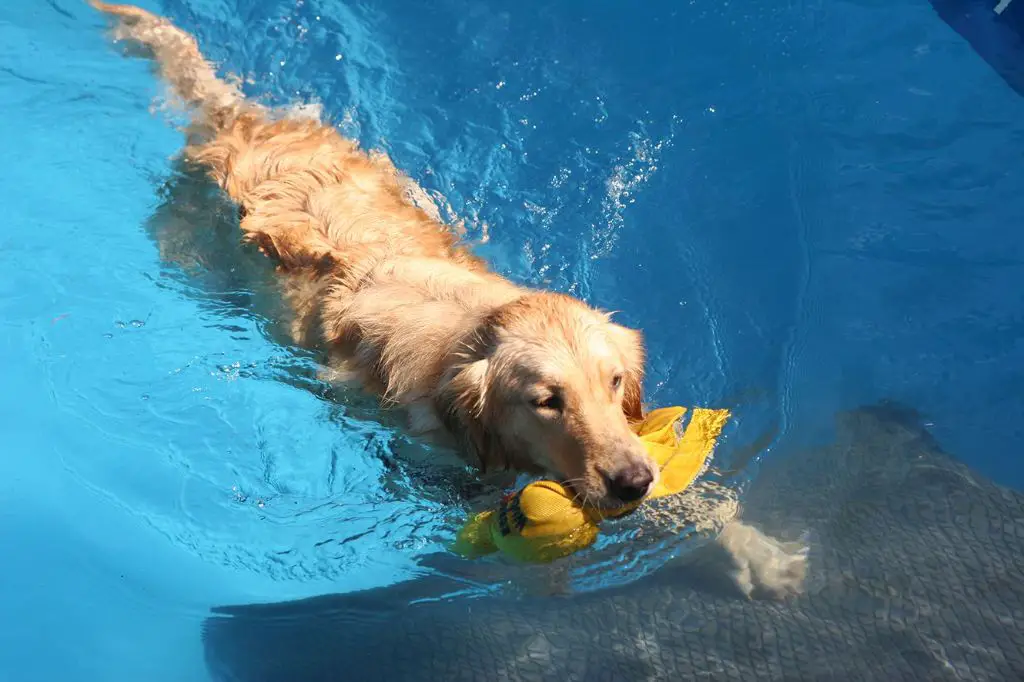Overview of Dog Hind Leg Anatomy
The hind legs of dogs contain bones, joints, muscles, tendons, ligaments, and associated soft tissues that allow dogs to stand, walk, run, jump and perform various movements. The basic structures of the hind leg include the hip, thigh, stifle or knee, hock, metatarsals and phalanges or toe bones. The hip joint attaches the hind limb to the pelvis and allows flexibility of motion. The thigh bone or femur connects from the hip to the knee joint. The knee or stifle joint connects the thigh to the hock or ankle area. The hock contains multiple bones that make up the ankle. The metatarsals are the long bones of the feet and the phalanges or toe bones allow flexibility and grip.
The main functions of the dog’s hind legs are to bear the dog’s weight, allow motion and provide propulsion. Key functions include:
- Weight bearing – the leg bones, joints and muscles bear the weight of the dog’s body.
- Flexibility – the hip, knee and ankle joints allow a full range of motion.
- Propulsion – the powerful muscles of the hind legs propel the dog forward and upward during walking, running and jumping.
- Balance – the muscles and joints provide stability and balance.
Understanding the anatomy of the hind legs is important for maintaining the dog’s mobility and health through all stages of life.
Muscles of the Upper Hind Limb

The upper hind limb of dogs contains several important muscle groups that allow for extension and flexion of the hip joint. The main muscles in this region are the gluteals, quadriceps, hamstrings, and adductors.
The gluteal muscles form the rump and are responsible for extending the hip joint. The main gluteals are the gluteus superficialis, gluteus medius, and gluteus profundus. These fan-shaped muscles originate along the ilium of the pelvis and insert onto the greater trochanter of the femur Medial Muscles of the Thigh in the Dog. Their contraction extends the hip to allow standing, jumping, and kicking motions.
The quadriceps muscles are located on the anterior thigh and aid in extending the stifle joint. This group consists of the rectus femoris, vastus lateralis, vastus medialis, and vastus intermedius. The hamstring muscles counteract the quadriceps by flexing the stifle when weight is placed on the limb.
On the medial thigh are the adductor muscles, most notably the gracilis, pectineus, and adductor. These adduct or bring the limb toward the midline of the body. The gracilis is the most superficial of the adductors, originating along the pelvic symphysis and inserting distally on the tibia Medial Muscles of the Thigh in the Dog. The adductors work alongside the gluteals and quadriceps to stabilize the hip and stifle during weight bearing.
Muscles of the Lower Hind Limb
The lower hind limb of a dog contains several key muscles that control movement of the hock and ankle joints. The three main calf muscles that make up the bulk of the lower hind limb are the gastrocnemius, superficial digital flexor, and deep digital flexor.
The gastrocnemius muscle is a large, two-headed muscle that spans the knee and hock joints. Its origin is on the femur above the knee, and it inserts on the calcaneus bone of the hock via the Achilles tendon (source). When contracted, it extends the hock and flexes the stifle. This muscle provides the main propulsive power for jumping and springing forward.
The superficial digital flexor and deep digital flexor muscles run down the rear of the calf and insert on the distal phalanges of the toes. They act to flex the hock and extend the digits, allowing the dog to curl its paws and spring off the ground during jumping or running (source). They also stabilize the ankle and hock joints.
Other important muscles of the lower hindlimb include the tibialis cranialis which flexes the hock, peroneus longus which everts the paw, and various short toe extensor muscles. Proper conditioning of the gastrocnemius, digital flexors, and associated muscles is critical for agility and performance in working and sporting dogs.
Major Muscles of the Hip
The major muscles of the hip include the gluteals, tensor fasciae latae, and piriformis. The gluteal muscles are a group of three large, powerful muscles that form the buttocks. They are the gluteus maximus, gluteus medius, and gluteus minimus. The gluteus maximus is the largest and most superficial gluteal muscle. It extends and laterally rotates the hip joint. The gluteus medius and minimus abduct and medially rotate the hip.

The tensor fasciae latae is a small muscle located anterior to the gluteus medius. It tenses the fascia lata and flexes and abducts the hip joint. The piriformis is a flat, pyramid-shaped muscle located deep to the gluteus maximus. It laterally rotates and abducts the thigh at the hip.
These major hip muscles play key roles in stabilizing the hip joint and producing powerful extension and rotation of the hindlimb during movement. Injury or weakness of these muscles can significantly impair a dog’s gait and mobility. Targeted exercises to strengthen these muscles are important for rehabilitation.
Sources:
http://vanat.cvm.umn.edu/carnLabs/Lab06/Lab06.html
Major Thigh Muscles
The major muscles of the thigh in dogs include the quadriceps, hamstrings, and adductors [1].
The quadriceps consist of four muscles that extend the hip and flex the stifle (knee). The muscles include the rectus femoris, vastus lateralis, vastus medialis, and vastus intermedius. Together, these muscles are crucial for standing, walking, running, and jumping [2].
The hamstrings are located on the back of the thigh and include the biceps femoris, semitendinosus, and semimembranosus. These muscles flex the stifle and extend the hip allowing dogs to propel themselves forward [2].
The adductors are a group of muscles on the medial thigh that draw the hindlimb toward the midline of the body. They work together with abductors on the lateral thigh to stabilize the hips and produce fine movements during walking [2].
Major Calf Muscles

The major calf muscles in a dog’s hind legs include the gastrocnemius, superficial digital flexor, and tibialis cranialis. The gastrocnemius is considered the main muscle in the calf and is crucial for flexing the stifle (knee) and hock (ankle) https://www.oakdaleveterinarygroup.com/gastrocnemius-muscle. It originates on the distal femur above the stifle joint and inserts on the calcaneus bone, forming the point of the hock. Injuries or strains to the gastrocnemius can cause lameness and difficulty moving the hind legs. Strengthening exercises like walking uphill can help build up this muscle.
The superficial digital flexor runs down the back of the calf along with the gastrocnemius. It flexes the hock and digits of the paw and aids in propulsion. The tibialis cranialis is found on the front/inside area of the calf. It flexes the hock and stabilizes the stifle during motion. Keeping these calf muscles strong and flexible through regular use and exercise is key to hind leg mobility and function.
Minor Muscles of the Hind Limb
While the major muscles like the quadriceps and hamstrings generate most of the power and movement in a dog’s hind legs, minor muscles play important supportive roles. Three key minor muscles to understand are the sartorius, gracilis, and popliteus.
The sartorius is a long, thin muscle that runs diagonally across the thigh. It acts to flex the hip joint and rotate the thigh outward. The gracilis is another thin muscle that sits alongside the sartorius, supporting hip flexion. The popliteus is located behind the knee joint. It helps to flex the knee as well as rotate the lower leg inward (Source).
While not the biggest or most powerful, these minor muscles provide vital stabilization and mobility to a dog’s hind legs. Injury or weakness in any of them can impair normal gait and movement. Targeted exercises to strengthen these muscles are often included in rehabilitation programs for dogs recovering from hind leg strains, sprains, and orthopedic surgeries.
Muscle Actions During Movement
The hind legs of dogs contain various muscles that allow for flexion, extension, abduction, and adduction movements. These actions are key for a dog’s ability to walk, run, jump, and play.
Flexion refers to decreasing the angle of a joint and bending a limb. For example, the biceps femoris and semitendinosus muscles flex the stifle (knee) joint when a dog is bringing its hind leg forward during walking or running.
Extension is the opposite action, straightening out a flexed joint and limb. The quadriceps muscles, like the rectus femoris, vastus lateralis, and vastus medialis, extend the stifle to allow the hind leg to push off the ground and propel the dog forward.
Abduction means moving a limb laterally away from the midline of the body. The gluteal muscles, like the gluteus medius, abduct the hip joint when dogs splay their hind legs outwards.
Adduction refers to bringing a limb medially back towards or across the midline. The gracilis and pectineus adduct the thigh as dogs bring their hind legs back together under their body after abduction.
Coordinated flexion, extension, abduction, and adduction of the hip, stifle, hock, and other joints by the muscles of the hind legs allow dogs to smoothly walk, trot, gallop, jump, and play. Improper muscle function can lead to gait abnormalities and lameness.
Injuries to Hind Leg Muscles
Some of the most common injuries to a dog’s hind leg muscles include strains, sprains, and tears. These injuries often occur when dogs overexert themselves during exercise or normal daily activity.
Strains happen when muscles or tendons are overstretched and fibers are damaged. Symptoms include limping, swelling, and tenderness. Treatment involves rest, cold compresses, and NSAIDs. More severe strains may require immobilization. According to 10 Common Back Leg Injuries in Dogs by https://www.licksleeve.com/blogs/news/10-common-back-leg-injuries-in-dogs injuries like strains are often preventable with proper conditioning and avoiding overexertion.
Sprains occur when ligaments that connect bones are torn or overstretched. This causes instability, pain, and inflammation. Mild sprains can heal with rest but severe ones may need surgery. According to Five Common Back Leg Injuries in Dogs to Remember by https://tploinfo.com/blog/common-back-leg-injuries-in-dogs/, sprains often affect ankles and knees.
Muscle tears are partial or complete ruptures of muscle fibers. Symptoms are sudden pain and swelling. As noted in Muscle Tears in Dogs by https://vcahospitals.com/know-your-pet/muscle-tears-in-dogs, tears require immediate veterinary attention including cold compresses, rest, and NSAIDs. More severe tears may need surgery and rehabilitation.
Preventing leg muscle injuries involves proper conditioning, avoiding overexertion, maintaining a healthy weight, and stretching. Early treatment and rehabilitation helps dogs fully recover.
Exercises to Strengthen Hind Leg Muscles
There are several exercises that can help strengthen a dog’s hind leg muscles. Two of the best exercises are swimming and stair climbing.

Swimming is an excellent low-impact exercise that works all of the muscles in the hind legs and hips. The water provides resistance as the dog kicks its hind legs, which helps to build strength and muscle tone. Swimming is especially good for dogs recovering from hind leg injuries, as the water supports their weight and reduces strain on the joints. It’s recommended to start with short 5-10 minute swimming sessions and gradually build up the duration as the dog gets stronger.
Stair climbing is another great strengthening exercise. Walking up and down stairs engages the hips, thighs, and calves as the dog raises its hind legs with each step. Start with a small set of three to five stairs. Have the dog walk up and down the stairs a few times per session. As the hind legs get stronger, gradually increase the number of stair repetitions. Make sure the dog climbs the stairs slowly and carefully to avoid falls or joint strain. Stair climbing can significantly improve hind leg strength, stability, and range of motion. Source
Weight shifting and balancing exercises can also strengthen hind leg muscles. Have the dog stand on an unstable surface like a cushion or wobble board. The small movements required to maintain balance engage the core and hind leg muscles. Start with 30 second sets and work up to longer durations. Make sure the dog has good footing and don’t overdo balancing exercises to avoid fatigue or injury.
When starting a hind leg strengthening program, consult a veterinarian, start slowly, watch for signs of fatigue or soreness, and allow plenty of rest between sessions. With time and consistency, focused exercises can significantly improve a dog’s hind leg muscle strength and mobility.